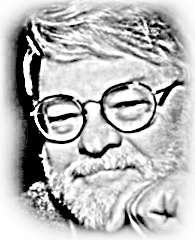Audio Tutorial Instruction
This story began for me in the mid-1960s at Mankato State College (now Minnesota State University - Mankato). I was a young member of the faculty in biology teaching microbiology and doing interesting research on the cellular organization of male reproductive organs. My senior colleagues included the department head, Dr. Leroy Zell as well as Drs. William "Bill" McEnery and Dan Burton who all played a part in the story of Audio-Tutorial Instruction. By the time I began paying attention, battle lines had already been drawn. This is a story of department politics as well as a method of teaching and learning. It does not have a particularly happy conclusion although it also lacks a definitive ending.
The cast of characters in this history includes: Sam Postlethwait, Leroy Zell, Dan Burton, Verona Devine Burton, William McEnery, Dale Chelberg, Bill Bessler, Joe McCulloch, Wayne Becker, John Darel Jackson, Ann Heuschele, Dale Lorenz, Arlend Otte, John ____ , Idelia Loso, Warren Eidsness, Jim Erickson, and a few others others to be named as we tell the story. (Don Beimborn, Nathan "Nat" Wisser, Sister Micheline Sexton, ) If I had not been a member of the cast, the story would not be told.
Well before I was admitted to the faculty lounge in the biology department, tension was born between Dr. Zell, and the Drs. Burton. One nexus was the University of Iowa and a professor of botany named Dean. Dr. Dean was the dissertation advisor for Sam Postlethwait, Verona Devine and LaRoy Zell. Their dissertations involved scholarship in plant anatomy. Verona Devine did a Master's Thesis on teaching.
Sam Postlethwait left Iowa and moved to Indiana with a faculty position at Purdue University. There he taught the large introductory botany course and began to have second thoughts about the efficacy of lecturing to several hundred students as a central course element and attaching laboratory sessions as something of a dangling participle. his breakthrough idea was to link lecture and laboratory. This began with making audio tapes of his lectures available for students to review. Over several years the ATI method evolved to embrace carefully crafted narratives on principles of botany that were intentionally interrupted to provide students with opportunity to explore observations and perform experiments. Manuals provided students with necessary illustrations, questions for consideration, additional background information as well as step-by-step direction for experiments and exercises.
It also began to spread through the midwest states and nationally.
21 March 2019
XXX


